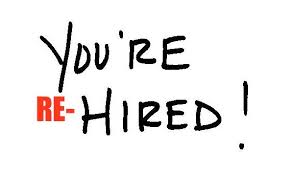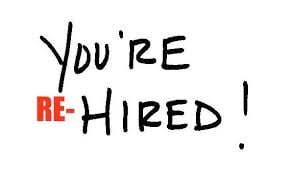Silicon Valley Bank’s (SVB) failure is actually reflective of what is happening with the bond fund in your American Airlines Group 401k. As interest rates have increased the value of the bond fund in your 401(k) has gone down. This is the same issue that caused SVB to lose value on their long-term bonds, which led to a fear that the bank would not be able to pay its depositors. As a result, the depositors started withdrawing their money, which led to the collapse of the bank. Silicon Valley Bank was taken over by regulators when it failed on March 10th, becoming the second greatest bank failure in American history. Two days later, Signature Bank was also forced to close due to insolvency. What caused these two banks to fall, what will happen next, and most importantly, how will this affect your American Airlines Group 401(k)?
Silicon Valley Bank's demise can be traced back to the beginning of the epidemic, when it attracted massive deposits from hot new startups, venture funding, and initial public offerings. SVB, flush with cash, invested in 'secure' assets such as mortgage bonds and U.S. Treasurys. As the central bank began to boost interest rates, however, the payments from these assets fell behind. The bank was left with approximately $17 billion in unrealized losses, and in order to cover deposits, they were compelled to realize a portion of these losses by selling assets. This resulted in a vicious negative feedback loop as more individuals attempted to withdraw their funds and SVB was obliged to sell more and more assets at a loss. In the end, they were unable to generate sufficient funds to cover withdrawals, prompting regulators to take the bank.
The Federal Deposit Insurance Corporation has partnered with the Treasury Department to cover all uninsured deposits at SVB in addition to deposits insured under the FDIC's $250,000 policy. Stockholders and holders of unsecured bonds received no aid from authorities. The focus is now on the process of divesting SVB and its long-term impact on American Airlines Group 401ks.
Featured Video
Articles you may find interesting:
- Corporate Employees: 8 Factors When Choosing a Mutual Fund
- Use of Escrow Accounts: Divorce
- Medicare Open Enrollment for Corporate Employees: Cost Changes in 2024!
- Stages of Retirement for Corporate Employees
- 7 Things to Consider Before Leaving Your Company
- How Are Workers Impacted by Inflation & Rising Interest Rates?
- Lump-Sum vs Annuity and Rising Interest Rates
- Internal Revenue Code Section 409A (Governing Nonqualified Deferred Compensation Plans)
- Corporate Employees: Do NOT Believe These 6 Retirement Myths!
- 401K, Social Security, Pension – How to Maximize Your Options
- Have You Looked at Your 401(k) Plan Recently?
- 11 Questions You Should Ask Yourself When Planning for Retirement
- Corporate Employees: 8 Factors When Choosing a Mutual Fund
- Use of Escrow Accounts: Divorce
- Medicare Open Enrollment for Corporate Employees: Cost Changes in 2024!
- Stages of Retirement for Corporate Employees
- 7 Things to Consider Before Leaving Your Company
- How Are Workers Impacted by Inflation & Rising Interest Rates?
- Lump-Sum vs Annuity and Rising Interest Rates
- Internal Revenue Code Section 409A (Governing Nonqualified Deferred Compensation Plans)
- Corporate Employees: Do NOT Believe These 6 Retirement Myths!
- 401K, Social Security, Pension – How to Maximize Your Options
- Have You Looked at Your 401(k) Plan Recently?
- 11 Questions You Should Ask Yourself When Planning for Retirement
In the aftermath of SVB's catastrophic collapse, it is essential to maintain composure and analyze your American Airlines Group 401k. The collapse of SVB has precipitated a severe decline in the stock values of mid-sized banks and the whole banking industry. The Federal Reserve has stepped in with a new mechanism to support banks dubbed the Bank Term Financing Program, which can keep any bank afloat until the crisis subsides. In addition, the quantity of bonds purchased in response to the collapse has pushed down short-term interest rates, allowing cash-strapped banks to liquidate a portion of their assets without incurring losses as severe as SVB. This has enabled banks to acquire the required liquidity margin to remain solvent and in business for the foreseeable future.
The most valuable lessons we can learn from SVB is that 'safe' assets are those that can be diversified and hedged. Do not let fluctuations in interest rates and lack of cash protection dictate your future decisions. It is crucial to meet with a financial advisor to ensure that your portfolio is up-to-date and risk-protected, as precautions like this would have likely saved SVB.
What is the 401(k) plan offered by American Airlines Group?
The 401(k) plan offered by American Airlines Group is a retirement savings plan that allows employees to save a portion of their paycheck before taxes are taken out.
How can I enroll in the 401(k) plan at American Airlines Group?
You can enroll in the 401(k) plan at American Airlines Group by accessing the employee benefits portal and following the enrollment instructions provided.
Does American Airlines Group offer matching contributions to the 401(k) plan?
Yes, American Airlines Group offers matching contributions to the 401(k) plan, helping employees maximize their retirement savings.
What is the vesting schedule for the 401(k) matching contributions at American Airlines Group?
The vesting schedule for matching contributions at American Airlines Group typically follows a graded vesting schedule, which means you gain ownership of the employer contributions over a period of time.
Can I change my contribution percentage to the 401(k) plan at American Airlines Group?
Yes, you can change your contribution percentage to the 401(k) plan at American Airlines Group at any time through the employee benefits portal.
What investment options are available in the American Airlines Group 401(k) plan?
The American Airlines Group 401(k) plan offers a variety of investment options, including mutual funds, target-date funds, and other investment vehicles to suit different risk tolerances.
Is there a loan option available through the 401(k) plan at American Airlines Group?
Yes, American Airlines Group allows employees to take loans against their 401(k) savings, subject to certain terms and conditions.
What happens to my 401(k) plan if I leave American Airlines Group?
If you leave American Airlines Group, you can choose to roll over your 401(k) balance to another retirement account, cash it out, or leave it in the plan if allowed.
At what age can I start withdrawing from my 401(k) plan at American Airlines Group without penalties?
You can start withdrawing from your 401(k) plan at American Airlines Group without penalties at age 59½, provided you meet other plan requirements.
Does American Airlines Group offer financial education resources for employees regarding their 401(k) plan?
Yes, American Airlines Group provides financial education resources, including workshops and online tools, to help employees understand their 401(k) plan options.
/General/General%2012.png?width=1280&height=853&name=General%2012.png)



-2.png?width=300&height=200&name=office-builing-main-lobby%20(52)-2.png)











-2.png)








